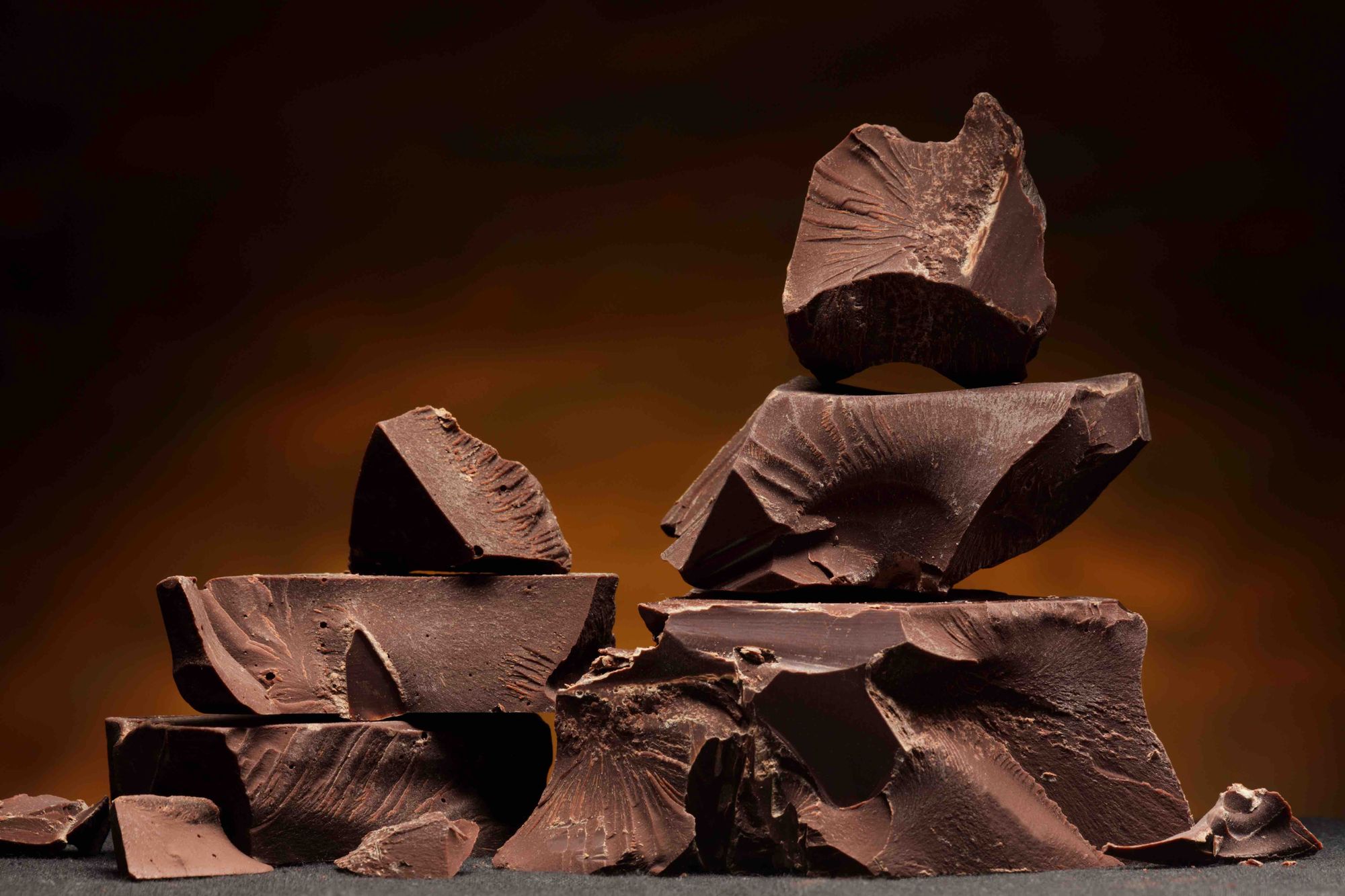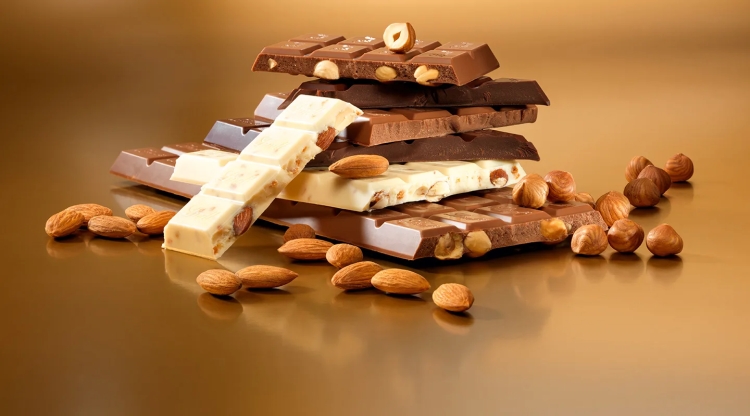Chocolate.
"Chocolate symbolizes, as does no other food, luxury, comfort, sensuality, gratification, and love." -Karl Petzke

When it comes to chocolate, resistance is futile. -Regina Brett
Roughly 4,000 years ago, around the year 1900 B.C., the Olmec people lived in the southern part of Mexico. In that region grows a very special plant, the cacao plant. The cacao plant produces cacao beans which are used to make chocolate. The Olmecs didn’t use the cacao beans to make chocolate bars. Instead, they roasted the beans, ground them up, mixed the paste with some spices and maybe a little bit of honey, and then drank it as a warm beverage. Did Olmecs make the first hot chocolate?

This cacao beverage may sound a bit like hot chocolate, but it tasted much different. Without sugar, cacao beans can be very bitter. So why exactly would the Olmecs want to drink something that tasted bitter? For the Olmec people, cacao was considered the food of the gods. It was used to enhance a person’s mood, and only a handful of people, such as rulers, priests, and warriors, were actually allowed to consume it.
Over time, the Mayan people also discovered cacao. Around the year 600 A.D., the Mayans began growing cacao beans on large plantations in the Yucatan Peninsula in Mexico. Through trade, chocolate became popular with the Aztecs, too. Their word for chocolate was xocolatl which kind of sounds a bit like the word we use today. In fact, cacao beans were so valuable that the Aztecs used them as a form of currency. You could actually buy things with chocolate beans!
In 1847, J.S. Fryer & Sons, a British chocolate company, created the first-ever solid chocolate bar with cocoa butter, cocoa powder, and sugar. At the turn of the last century, the company was one of the largest employers in Bristol, UK. In 1913, Joseph Storrs Fry II died leaving the chocolatier rudderless. In 1919 the company merged with Cadbury’s chocolate and the joint company was named “British Cocoa and Chocolate Company”.

Then in 1879, Rodolphe Lindt invented the conching machine, which made chocolate into a velvety texture with superior flavors. This eventually led to the mass production of smooth, creamy milk chocolate on factory assembly lines.

Other companies such as Hershey, Cadbury, and Mars were creating large quantities of chocolate during the late 1800s and early 1900s during the chocolate boom. Now, chocolate is being used to make drinks and other sweet treats like Nutella and hot fudge.
In America, approximately 2.8 billion pounds of chocolate is consumed each year—that’s about 11 pounds per person. The Midwest and Northeastern states consume more candy bars than the South, Southwest, West, and Mid-Atlantic states. The US produces more chocolate than any other country, but the Swiss consume the most, followed by the United Kingdom. More than $75 billion is spent worldwide on chocolate annually.
Chocolate lovers shall never ever feel guilty for eating fudge from the container. Don’t judge yourself for chugging Hershey’s chocolate syrup or putting extra cocoa powder in your hot chocolate. Enjoy whatever your chocolate fix and savor every moment of it.
Remember, chocolate is a “food of the gods,” meaning every time that you’re eating chocolate, you’re eating like royalty. And, chocolate is good for you. According to John Hopkins research has shown that dark chocolate can benefit you:
- Increases heart health: The antioxidants in dark chocolate have been shown to lower blood pressure, reduce the risk of clotting and increase blood circulation to the heart, thus lowering the risks of stroke, coronary heart disease, and death from heart disease.
- Balances the immune system: Flavonols prevent the immune system from going into overdrive and reduce oxidative stress, which is an imbalance caused by cells fighting against free radicals and a common cause of many diseases.
- Combats diabetes: Epicatechin protects cells, makes them stronger, and supports the processes that help the body to use insulin better, which might prevent or combat diabetes.
- Improves brain function: Flavonols in dark chocolate have a positive impact on brain function, including better reaction time, visual-spatial awareness, and stronger memory. Though research is ongoing, one reason for this may be that flavonols increase blood flow to the brain.
- Boosts athletic performance: The epicatechin in dark chocolate increases the production of nitric oxide in the blood, which supports circulation and reduces the amount of oxygen an athlete uses while engaged in moderately intense exercise. This allows the athlete to maintain workout intensity for longer.
- Reduces stress: People who ate dark chocolate reported that they felt less stressed, and researchers confirmed that after eating dark chocolate, there were reduced levels of the stress hormone cortisol. This may be related to dark chocolate’s effects on heart health since stress is a risk factor for cardiovascular disease.
With its health-boosting compounds and micronutrients, you should consider letting dark chocolate into your life, if it’s not a part of it already. Specifically, a 100-gram bar of dark chocolate with 70–85% cocoa contains:
- 11 grams of fiber
- 67% of the DV for iron
- 58% of the DV for magnesium
- 89% of the DV for copper
- 98% of the DV for manganese
In addition, it has plenty of potassium, phosphorus, zinc, and selenium.
Of course, 100 grams (3.5 ounces) is a fairly large amount and not something you should be consuming daily. These nutrients also come with 600 calories and moderate amounts of sugar.

Chocolate is one of the few foods that taste great while providing significant health benefits.
Until next time. Travel safe.

